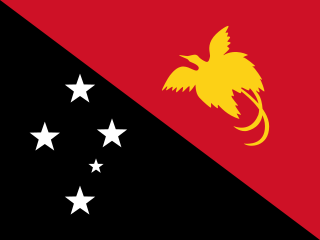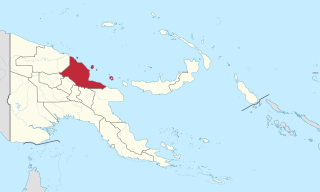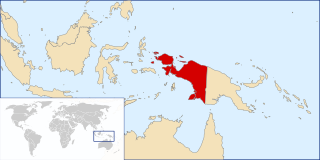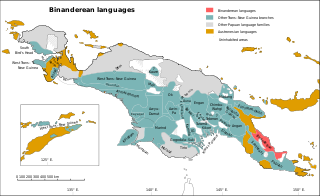
Papua New Guinea competed at the 2011 World Aquatics Championships in Shanghai, China between July 16 and 31, 2011.

Papua New Guinea competed at the 2011 World Aquatics Championships in Shanghai, China between July 16 and 31, 2011.
Papua New Guinea qualified 3 swimmers. [1]
| Athlete | Event | Heats | Semifinals | Final | |||
|---|---|---|---|---|---|---|---|
| Time | Rank | Time | Rank | Time | Rank | ||
| Ryan Pini | Men's 100m Freestyle | 50.34 | 41 | did not advance | |||
| Men's 200m Freestyle | 1:52.23 | 38 | did not advance | ||||
| Men's 50m Butterfly | 24.26 | 25 | did not advance | ||||
| Men's 100m Butterfly | 52.69 | 20 | did not advance | ||||
| Athlete | Event | Heats | Semifinals | Final | |||
|---|---|---|---|---|---|---|---|
| Time | Rank | Time | Rank | Time | Rank | ||
| Anna-Liza Mopio-Jane | Women's 50m Freestyle | 26.91 | 37 | did not advance | |||
| Women's 100m Freestyle | 58.86 | 46 | did not advance | ||||
| Judith Meauri | Women's 100m Freestyle | 1:01.54 | 56 | did not advance | |||
| Women's 50m Butterfly | 31.56 | 43 | did not advance | ||||

Papua New Guinea is a country in Oceania that comprises the eastern half of the island of New Guinea and offshore islands in Melanesia, a region of the southwestern Pacific Ocean north of Australia. It has a land border with Indonesia to the west and neighbours Australia to the south and the Solomon Islands to the east. Its capital, on its southern coast, is Port Moresby. The country is the world's third largest island country, with an area of 462,840 km2 (178,700 sq mi).

Port Moresby, also referred to as Pom City or simply Moresby, is the capital and largest city of Papua New Guinea. It is one of the largest cities in the southwestern Pacific outside of Australia and New Zealand. It is located on the shores of the Gulf of Papua, on the south-western coast of the Papuan Peninsula of the island of New Guinea. The city emerged as a trade centre in the second half of the 19th century. During World War II, it was a prime objective for conquest by the Imperial Japanese forces during 1942–43 as a staging point and air base to cut off Australia from Southeast Asia and the Americas. Due to its population and outsized influence compared to other cities in Papua New Guinea, Port Moresby may be regarded as a primate city.

Bougainville Island is the main island of the Autonomous Region of Bougainville, which is part of Papua New Guinea. Its land area is 9,300 km2 (3,600 sq mi). The highest point is Mount Balbi, on the main island, at 2,715 m (8,907 ft).

Sandaun Province is the northwesternmost mainland province of Papua New Guinea. It covers an area of 35,920 km2 and has a population of 248,411. The capital is Vanimo. In July 1998 the area surrounding the town of Aitape was hit by an enormous tsunami caused by a Magnitude 7.0 earthquake which killed over 2,000 people. The five villages along the west coast of Vanimo towards the International Border are namely; Lido, Waromo, Yako, Musu and Wutung. It borders Indonesia.

The Territory of Papua comprised the southeastern quarter of the island of New Guinea from 1883 to 1975. In 1883, the Government of Queensland annexed this territory for the British Empire. The United Kingdom Government refused to ratify the annexation but in 1884 a protectorate was proclaimed over the territory, then called British New Guinea. There is a certain ambiguity about the exact date on which the entire territory was annexed by the British. The Papua Act 1905 recites that this happened "on or about" 4 September 1888. On 18 March 1902, the Territory was placed under the authority of the Commonwealth of Australia. Resolutions of acceptance were passed by the Commonwealth Parliament, which accepted the territory under the name of Papua.

For administrative purposes, Papua New Guinea is divided into administrative divisions called provinces. There are 22 provincial-level divisions, which include 20 provinces, the Autonomous Region of Bougainville, and the National Capital District of Port Moresby.

The Papua New Guinea national soccer team is the men's national soccer team of Papua New Guinea and is controlled by the Papua New Guinea Football Association. Its nickname is the Kapuls, which is Tok Pisin for Cuscus.

Madang is a province of Papua New Guinea. The province is on the northern coast of mainland Papua New Guinea and has many of the country's highest peaks, active volcanoes and its biggest mix of languages. The capital is the town of Madang.

Western New Guinea, also known as Papua, Indonesian New Guinea, and Indonesian Papua, is the western half of the island of New Guinea, formerly Dutch and granted to Indonesia in 1962. Given the island is alternatively named Papua, the region is also called West Papua.

East Sepik is a province in Papua New Guinea. Its capital is Wewak. East Sepik has an estimated population of 450,530 people and is 43,426 km square in size. Its density is 10.4 people per square kilometer.

The Papua New Guinea men's national cricket team, nicknamed the Barramundis, is the team that represents the country of Papua New Guinea in international cricket. The team is organised by Cricket PNG, which has been an associate member of the International Cricket Council (ICC) since 1973. Papua New Guinea previously had One-Day International (ODI) status, which it gained by finishing fourth in 2014 World Cup Qualifier. Papua New Guinea lost both their ODI and T20I status in March 2018 after losing a playoff match against Nepal during the 2018 Cricket World Cup Qualifier, a result that earned ODI and T20I status for their opponents. On 26 April 2019, Papua New Guinea defeated Oman to secure a top-four finish in the 2019 ICC World Cricket League Division Two and reclaim their ODI status.
The Papua New Guinea national rugby union team, nicknamed the Pukpuks,, played its first international in 1966, defeating Vanuatu 47–3. Papua New Guinea have not so far qualified for a Rugby World Cup. They participated in the Oceania World Cup qualifying tournaments for the 2007, 2011 and 2015 World Cups, but did not qualify.

Papua New Guinea has 326 local-level governments (LLGs) comprising 6,112 wards as of 2018.

Papua New Guinea, a sovereign state in Oceania, is the most linguistically diverse country in the world. According to Ethnologue, there are 839 living languages spoken in the country. In 2006, Papua New Guinea Prime Minister Sir Michael Somare stated that "Papua New Guinea has 832 living languages ."

This page is a list of districts of Papua New Guinea.

New Guinea is the world's second-largest island, with an area of 785,753 km2 (303,381 sq mi). Located in Melanesia in the southwestern Pacific Ocean, the island is separated from Australia by the 150-kilometre wide Torres Strait, though both landmasses lie on the same continental shelf, and were united during episodes of low sea level in the Pleistocene glaciations as the combined landmass of Sahul. Numerous smaller islands are located to the west and east. The island's name was given by Spanish explorer Yñigo Ortiz de Retez during his maritime expedition of 1545 due to the resemblance of the indigenous peoples of the island to those in the African region of Guinea.

The Greater Binanderean or Guhu-Oro languages are a language family spoken along the northeast coast of the Papuan Peninsula – the "Bird's Tail" of New Guinea – and appear to be a recent expansion from the north. They were classified as a branch of the Trans–New Guinea languages by Stephen Wurm (1975) and Malcolm Ross (2005), but removed by Timothy Usher (2020). The Binandere family proper is transparently valid; Ross connected it to the Guhu-Semane isolate based on pronominal evidence, and this has been confirmed by Smallhorn (2011). Proto-Binanderean has been reconstructed in Smallhorn (2011).

The Papua conflict is an ongoing conflict in Western New Guinea (Papua) between Indonesia and the Free Papua Movement. Subsequent to the withdrawal of the Dutch administration from the Netherlands New Guinea in 1962 and implementation of Indonesian administration in 1963, the Free Papua Movement has conducted a low-intensity guerrilla war against Indonesia by targeting its military and police, along with ordinary Indonesian civilians.